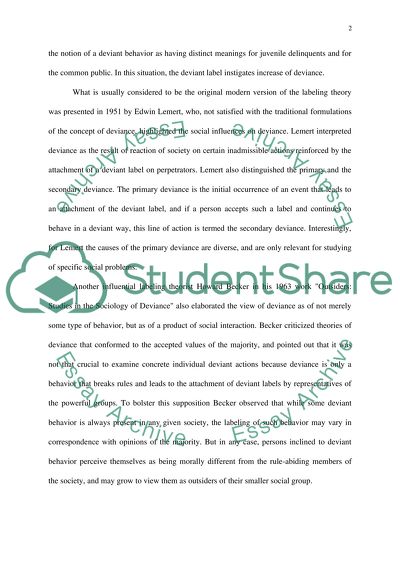Theories of Deviance Essay Example | Topics and Well Written Essays - 750 words. Retrieved from https://studentshare.org/psychology/1505967-theories-of-deviance
Theories of Deviance Essay Example | Topics and Well Written Essays - 750 Words. https://studentshare.org/psychology/1505967-theories-of-deviance.


